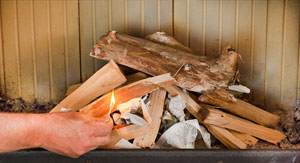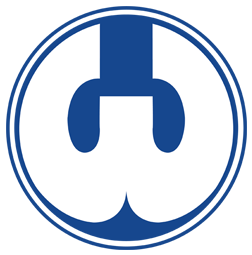
Ensuring your customers understand their stove and how it burns correctly is important for their safety and enjoyment. While many UK residents are used to the advantages a solid fuel stove can bring and how they should use it correctly, many new adopters are still starting out in their solid fuel journey and need a little extra guidance to ensure they are getting the most from their new appliance.
If you’re carrying out an installation for new stove users, it would be very helpful to them if you could assist by offering some expert advice by way of telling them what to look for when lighting up for the first time. Of course, it is your duty to make them aware of the risks behind solid fuel burning, but the extra few tips you can offer will help them greatly and it will enhance your reputation considerably.
We all know in the first instance users should turn to their manufacturer’s manual to ensure they are using their appliance in line with recommended instruction, but after this new comers may wonder whether they are doing it correctly. These pointers might help.
Lighting the stove
- Ensuring the all the stoves air vents are completely open place old, scrunched-up newspaper or firelighters along with kindling, in between two logs that have been placed in an arrow shape at the base of the stove.
- Light the paper with a match. This will form an instant flame and will catch fire to the kindling and wood within the stove also. Once alight, reduce the air intake.
- The stove will now be well lit, ensure it is maintained by adding small amounts of additional fuel when necessary. Avoid filling the chamber completely with logs – this will reduce air supply.
The main components of an efficient burn
Knowing the three T’s is a good way of remembering how to create an efficient burn of fuel that provides heat to the room. These are:
- Time – It takes time for the fuel to burn and for the combustion air to push itself up the chimney.
- Temperature – Burning more efficiently at high temperatures, where negligible smoke is released. If the temperature isn’t high enough then heat will be lost and excess smoke will be released.
- Turbulence – Fuel should be arranged in an order that ensures air and combustion gases can mix. This makes for an efficient burn.
How a healthy fire should look
Once alight with minimal smoke and a nice heat release, it is important that your customers understand how their fire is behaving to ensure a healthy flame. The flame should be similar to the following:
- Energetic – Flames will be high and roaring. This is a good sign when the fire has just been lit as it signifies that it has reached a good temperature, but shouldn’t stay like this for very long.
- Lazy – Covering the whole surface of the stove a lazy flame is when heat is being produced efficiently. This happens when temperature has been reached.
- Red hot embers – These are also efficient as they are providing heat with minimal smoke, but should be monitored as if left the fire could die down if not refuelled.
For those starting out these tips will be of great use and will set them up for clean, efficient and safe burning each and every time. Should you wish to give such information to your customers, HETAS has produced a comprehensive guide that you can pass on so customers can refer to it as much as they like.
Find out more, here: http://www.hetas.co.uk/wp-content/mediauploads/hetas-2-operating-leaflet.pdf
Join our training community!
Like what you see? Why not share this story via social media and spread the word about our ever expanding range of courses and top quality services?! Simply click on the icons below to be taken to our respective social media pages, for updates on the latest Waxman Training news, courses and events.


